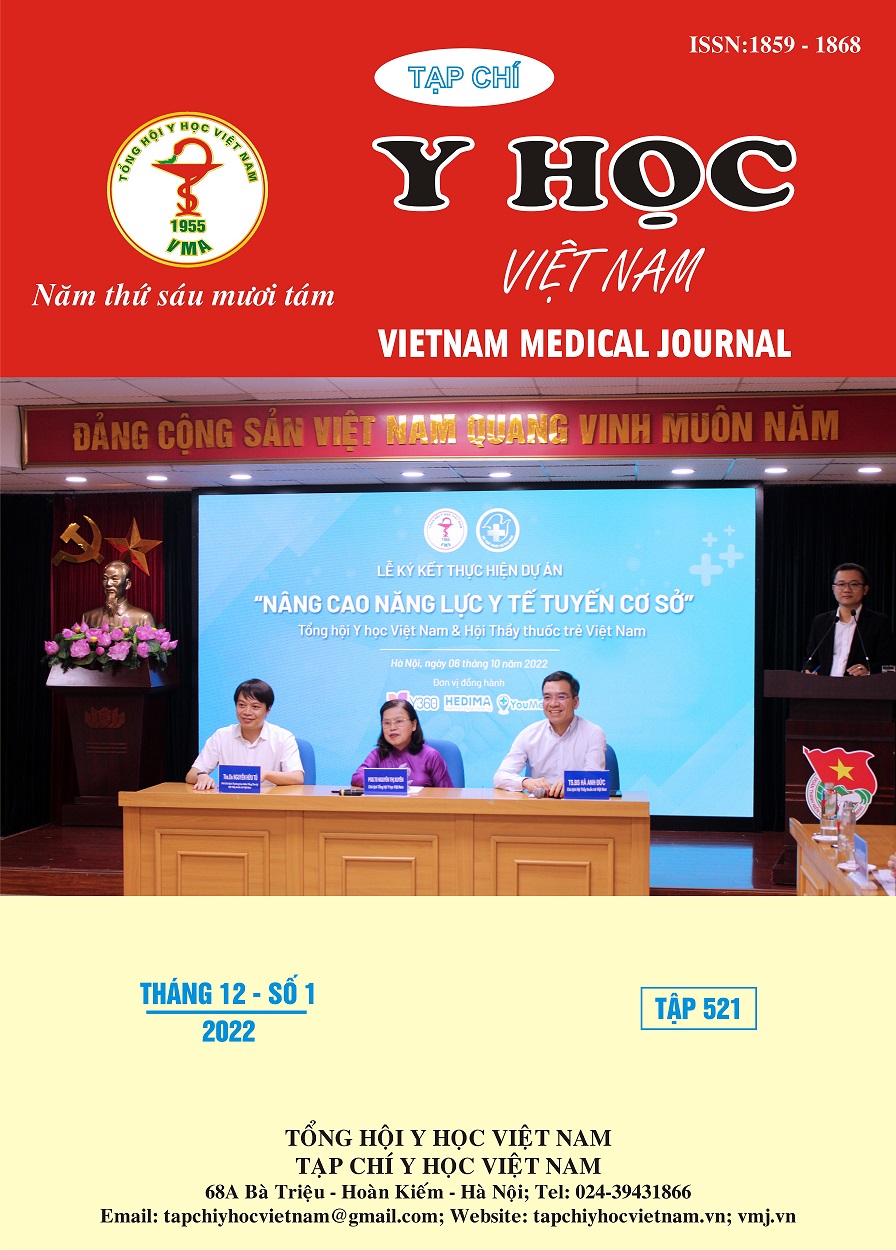CLINICAL, LABORATORY, MICRPBIOLOGICAL AND SHORT-TEM OUTCOMES OF COMMUNITY-ACQUIRED PNEUMONIA IN HOSPITALIZED COPD PATIENTS
Main Article Content
Abstract
Objectives: To describes the prevalence and clinical, laboratory, microbiological and short-term outcomes of community-acquired pneumonia in hospitalized COPD patients, and also investigates risk factors for CAP in this group of patients. Subjects and methods: Cohort study on 180 COPD patients hospitalized for acute lower respiratory tract infections. Patients were divided into 2 groups of CAP-COPD (n=58) and EACOPD (n=122) based on new progressive infiltrates or consolidation on chest radiograph. Anthropometric, clinical, laboratory, and microbiological characteristics and course of hospital stay were all recorded. Results: The rate of CAP in hospitalized COPD patients was 32.2%. COPD patients with CAP had lower BMI, more severe obstruction (FEV1%), clinical manifestations (fever, purulent sputum, increased sputum volume) and paraclinical indicators (leukocytosis, decreased eosinophil, increased CRP, changes in arterial blood gas) more severe than exacerbation patients. The CAP group had a higher rate of respiratory failure and a longer hospital stay than the exacerbation group. Independent risk factors predicting CAP in patients with COPD include fever (OR=3.4451); FEV1<30% (OR=3,517); BC>10K/µL (OR=3.115), CRP (OR=1,061). The CRP cut-off was 15.745mg/l with AUC 0.912; sensitivity 93.1%; specificity 77%. Conclusion: COPD patients hospitalized for CAP have many differences in clinical, paraclinical and disease progression compared with COPD exacerbations and have independent risk factors predicting the occurrence of CAP in COPD patients.
Article Details
Keywords
COPD exacerbation, community-acquired pneumonia, pulmonary infiltration/ consolidation
References
2. Metlay J, Waterer G, Long A, Anzueto A, Brozek J, Crothers K et al. Diagnosis and Treatment of Adults with Community-acquired Pneumonia. An Official Clinical Practice Guideline of the ATS/IDSA. Am J Resp Critic Care Med. 2019;200(7):e45-e67
3. Sharafkhaneh A., Tavakoli-Tabasi S., Musher D. (2017). Mortality in Patients Admitted for Concurrent COPD Exacerbation and Pneumonia. COPD. 14(4), pp. 462.
4. Finney L.J., Padmanaban V., Todd S., et al (2019). Validity of the diagnosis of pneumonia in hospitalised patients with COPD, ERJ Open Res. 5(2).
5. Williams N.P., Coombs N.A., Johnson M.J., et al (2017). Seasonality, risk factors and burden of community-acquired pneumonia in COPD patients: a population database study using linked health care records. Int J Chron Obstruct Pulmon Dis. 12, pp. 313-322.
6. Huerta A., Crisafulli E., Menendez R., et al (2013). Pneumonic and nonpneumonic exacerbations of COPD: inflammatory response and clinical characteristics. Chest. 144(4), pp. 1134-1142.
7. Đặng Quỳnh Giao Vũ, Lê Thượng Vũ. (2017). Đặc điểm lâm sàng và kết cục của viêm phổi ở bệnh nhân bệnh phổi tắc nghẽn mạn tính. Tạp Chí Thời Sự Y Học 9, pp. 63-69
8. Martinez-Garcia M.A., Faner R., Oscullo G., et al (2020). Inhaled Steroids, Circulating Eosinophils, Chronic Airway Infection, and Pneumonia Risk in Chronic Obstructive Pulmonary Disease. A Network Analysis. Am J Respir Crit Care Med. 201(9), pp. 1078-1085.


